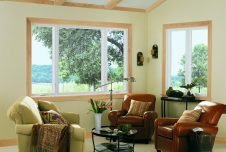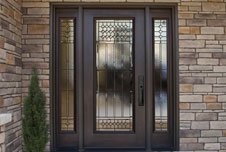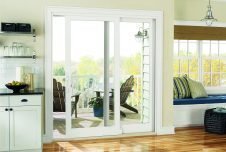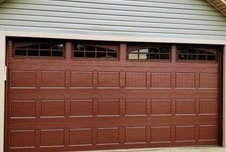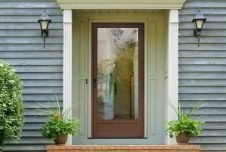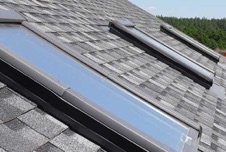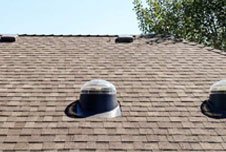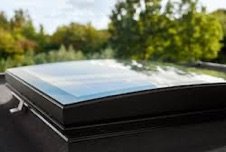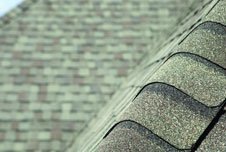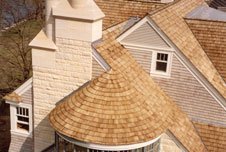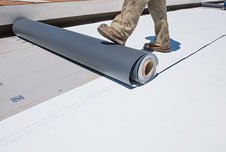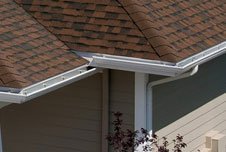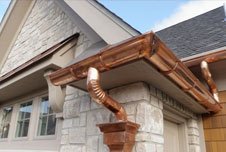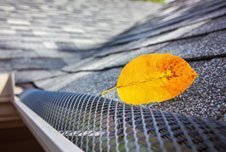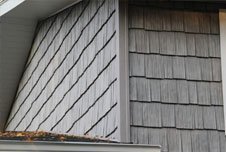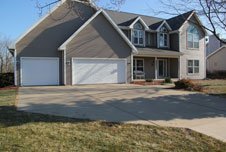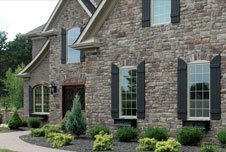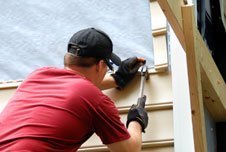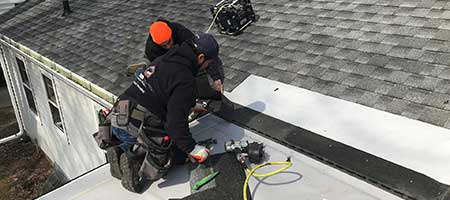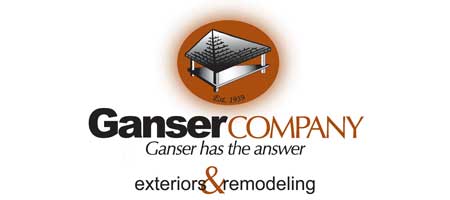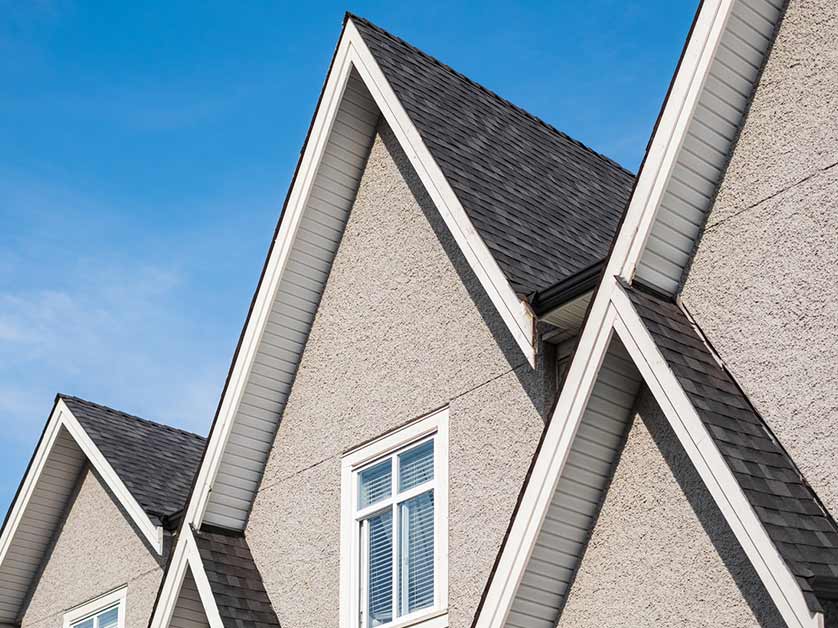Knowing your roof’s lifespan can help you plan for one of the most substantial household expenses — roof replacement. Whether you have asphalt shingles, metal, wood, or tile, the material of your roof plays a key role in its longevity. Read on as we look at how long various roofing systems last and the factors that can affect their lifespan.
Asphalt Shingle Roofs
Asphalt shingle roofs are common and usually last around 20 to 30 years. This lifespan can vary depending on factors like weather conditions and maintenance. Signs of wear aren’t always obvious, but they typically include curling, cracking or missing shingles. If you find granules in the gutter, your shingles may be nearing the end of their lifespan.
Metal Roofs
Metal roofs are popular because of their durability and long lifespan, which can range from 40 to 70 years. Materials can vary from steel to aluminum and even copper, each with a different lifespan and aesthetic. Always remember, though, that proper installation can greatly extend a metal roof’s life.
Wood Shake and Shingle Roofs
Known for their natural aesthetic, wood shake and shingle roofs typically last around 20 to 40 years. However, this is dependent on the quality of the wood and its maintenance. These roofs require regular treatment to prevent rot and insect damage. Always consider fire resistance and local fire codes before choosing a wood roof.
Tile Roofs
Tile roofs last anywhere from 25 to 50 years and come in various designs. They are known for their durability and resistance to fire and pests. Regular maintenance ensures the tiles stay firmly in place. Routinely check for signs of cracked, broken or missing tiles.
Slate Roofs
Slate roofs can last from 75 to 200 years, depending on the quality of the slate. They are known for their aesthetics and durability. However, they are more expensive and require specialized skills for installation. Regular maintenance and repair of the slate can prevent damage and lengthen its service life.
EPDM Roofs
EPDM (ethylene propylene diene monomer) is a rubber-like material commonly used for flat roofs. It has a lifespan of around 20 to 30 years. However, appropriate maintenance and repairs can increase its longevity. EPDM is lightweight and cost-effective, making it an excellent roofing option for commercial and residential roofs.
PVC Roofs
PVC (polyvinyl chloride) roofs are commonly used on commercial buildings and have a lifespan of around 20 to 25 years. Unsurprisingly, they are highly resistant to fire and rot. They also come with different design options. Regular inspections are necessary to ensure that water isn’t pooling on the roof and causing leaks.
TPO Roofs
TPO (thermoplastic polyolefin) roofs are one of the most popular roofing materials for commercial buildings. They have a shorter lifespan than other roofing materials, ranging from 15 to 20 years. Regular maintenance and repairs can help prevent premature failure.
Concrete Roofs
Concrete roofs are known for their durability and longevity, typically lasting 25 to 40 years. Materials like terra cotta can last considerably longer. However, like other roofing materials, it pays to be aware of signs of wear and carry out timely maintenance. This will reduce the chances of leaks and extend roof lifespan.
Fiber Cement Roofs
Fiber cement roofs are an excellent option for those looking for a long-lasting roof. They have a lifespan of approximately 25 to 40 years, depending on the quality of the material. Fiber cement roofs are also known for their fire resistance and ability to withstand harsh weather conditions. They also require minimal maintenance and are relatively more cost-effective than other roof types.
Synthetic Roofs
Synthetic roofs are a newer roofing material but have been gaining popularity in recent years due to their aesthetics and durability. A synthetic roof has a lifespan of around 20 to 30 years and requires regular maintenance. It is also important to consider the fire resistance of a synthetic roof before opting for its installation.
Factors Influencing Roof Lifespan
The lifespan of your roof can be influenced by numerous factors. The type of roofing material used is a significant determinant. Whether it’s asphalt shingles, metal, tile, or wood shakes, each has a unique lifespan. Here are other factors that affect a roof’s service life.
-
Quality of Installation: The quality of installation and craftsmanship play a significant role in your roof’s longevity. Experienced and certified roofing contractors will know the best techniques to install your roof for maximum longevity. They’ll also take into consideration local fire codes and regulations.
-
Ventilation and Insulation: Appropriate ventilation and insulation play an essential role in lengthening the life of your roof. They prevent temperature extremes and moisture buildup within the home. This can significantly reduce the wear and tear on a roof over time.
-
Impact of Climate and Environment: The regional climate can significantly impact the lifespan of your roof. Extreme temperatures, high humidity, strong winds or heavy precipitation can all affect the longevity of your roof. To extend your roof’s lifespan, select materials best suited to your local environment.
Extending Your Roof’s Service Life
To help extend your roof’s service life, consider the following tips:
-
Clean your gutters frequently. This prevents water damage and helps your roof last longer.
-
Get regular roof inspections to identify any problems early and help you take corrective actions before the damage gets too severe.
-
Repairing or replacing damaged shingles promptly can prevent further damage and extend the life of your roof.
-
Insulate properly to help keep temperatures in your attic even and consistent. This will help keep the roof cool in the summer and warm in the winter, prolonging its service life.
-
Trees close to your roof can cause damage and leaks. Trimming them back regularly and ensuring branches or leaves don’t remain on the roof can extend its lifespan.
-
Avoid walking on the roof. Unnecessary contact and pressure on the roof can cause damage to the shingles, which can shorten their service life.
-
Make sure penetrations through the roof are sealed. This will help keep water and pests out of your home and protect your roof from further damage.
Entrust Your Roof to a Qualified Roofing Contractor
Knowing your roof’s lifespan and the factors that influence its longevity will help you plan and budget accordingly for maintenance and potential replacement. For your roof replacement and exterior home improvement needs in Madison, WI, team up with the experts at Ganser Company. Visit our contact page or call (608) 222-1243 to schedule a consultation!

